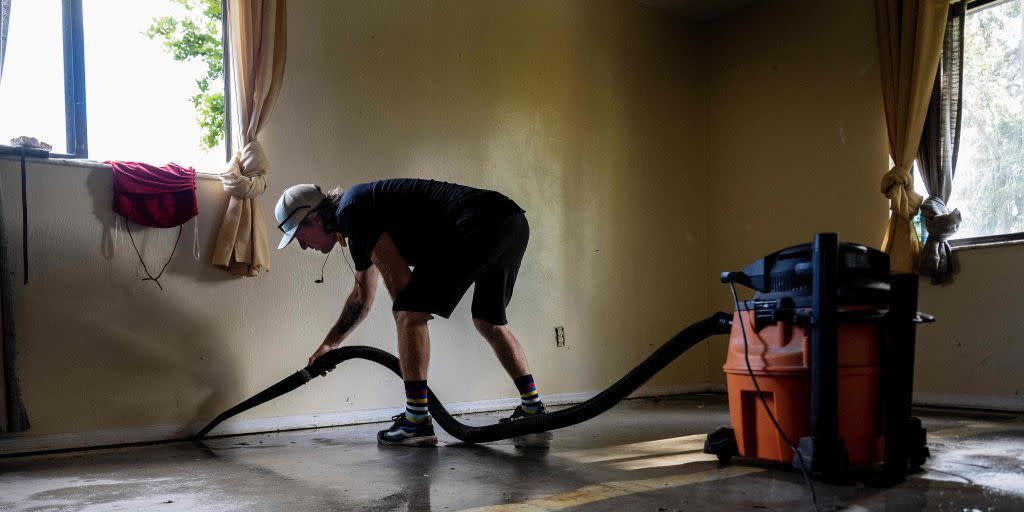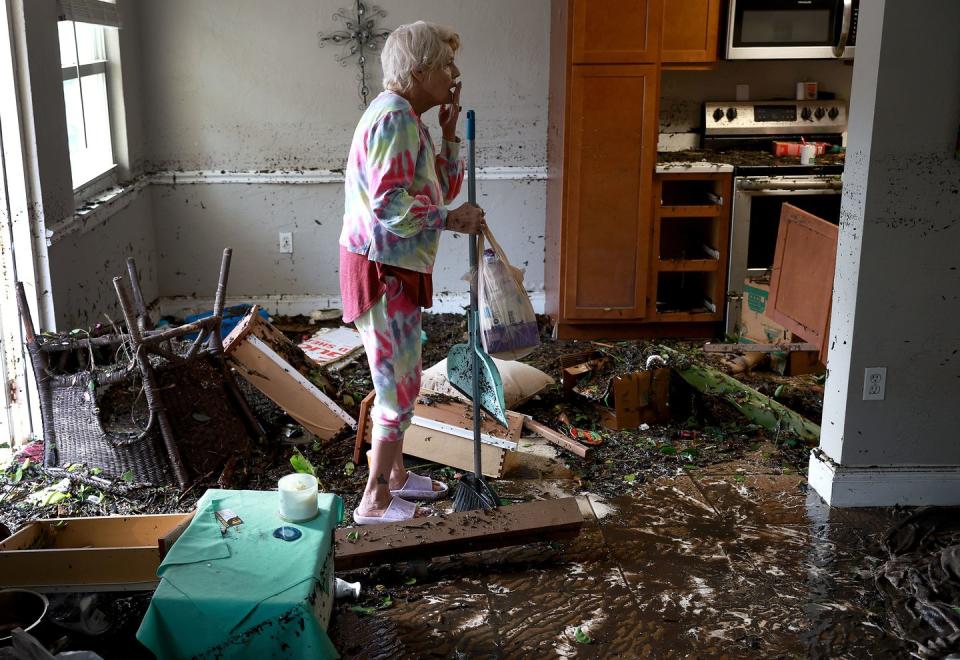Here’s What to Do With Your Carpets After a Flood

Flooding brings “grossly contaminated” water through a house, necessitating the removal of carpet to the subfloor.
Following carpet removal, thorough disinfecting and proper drying techniques are critical for keeping mold at bay.
Just because water didn’t reach the top floor doesn’t mean contamination isn’t present there.
The devastation that natural disasters leave in their wake takes on many forms, including wreaking havoc on flooded homes. A house inundated with flood water needs more care than a simple drying; it needs a full removal of contaminants, followed by disinfecting and drying.
“Carpet does need to be torn out because of bacteria and other contaminates that can be in the water,” Sam Roth, owner of ServiceMaster Cleaning by Roth in Bellingham, Washington, tells Popular Mechanics. Roth recently aided in flood disaster relief in Sumas, Washington, and regularly travels the country assisting with flood restoration following natural disasters.
🛠 Ready for your next DIY project? We’ve got you covered—join Pop Mech Pro.
“As that water floods and runs across areas before it gets to the house, it is picking up bacteria and contaminates. It could be sewage, oils, bacteria from the ocean, synthetic products, pesticides from agriculture in the area. It can be all of those difficult things and it is going to combine in the water and get deposited in the carpet of the home,” Roth explains.
The Institute of Inspection Cleaning and Restoration Certification, the governing body for disaster restoration and flood mitigation, classifies flood water in three categories. Category 1 is clean water, such as a pipe leak under the sink. Category 2 is gray water, a mildly contaminated water source akin to a bathtub overflow. Category 3, though, steps up the danger and is listed as “grossly contaminated.” Hurricane flooding falls into the latter basket.
Roth says that with Category 3 flooding, the carpet can’t be saved. Full removal down to the subfloor is needed, whether it’s a concrete slab popular in Florida slab-on-grade homes or a plywood subfloor used in other construction methods.
Removing the carpet isn’t just a matter of ripping it out, though. With all that potential contamination, Roth cautions that personal protective equipment is a must to “protect yourself from whatever can be in the water. Treat it like sewage.”
He recommends safety glasses, boots, arm-high gloves, and potentially a respirator. If you’re working in a crawl space, you should opt for a full suit.
Once the carpet is fully removed from the house, the next step is cleaning the subfloor of any dirt and debris. From there comes a crucial step that often gets overlooked: disinfecting and drying.
“In Sumas, for example, people that did their own tear-out didn’t do a good job disinfecting and found they had a lot of molds growing afterward,” Roth says, referring to the November 2021 Nooksack River flood that decimated a small town located on the Canadian border.
Once the carpet is out and the subfloor is cleaned, Roth says an EPA-registered disinfectant is key. Follow the directions on the product packaging to ensure a proper disinfecting. But don’t let the floor air dry, which could take three to four weeks, creating the possibility for mold to creep in.
“Fans and dehumidifiers are the best way because you can control how fast it dries,” Roth says. “Using artificial drying, it forces it to evaporate and dry much faster than if it air-dried on its own. When drying really fast, it doesn’t allow mold to grow.” He calls it getting the house back to the “dry standard.”
Roth cautions that for older homes that may have a layer of carpet over an underlayment that sits atop the subfloor, homeowners need to remove every layer of the flooring, getting to the lowest surface. “If you don’t take it back to the subfloor, it is a mistake because it can leave contaminates and mold in between the two layers of floor,” he says. “You want to get everything back to the subfloor so you can clean and disinfect.”
For multi-level homes with carpets upstairs not directly touched by floodwater, Roth cautions against leaving them in the home if anyone has walked through the squishy flooded main floor and tracked those contaminants upstairs. “Most folks trying to rush to get stuff taken care of are not going to be thinking about a decontamination station halfway up the stairs,” he says. “The safe thing to do is replace.”

Even if you haven’t gone upstairs at all, airborne contaminants can still make their way up. In those cases, Roth says a thorough hot-water extraction carpet clean should suffice, but if there’s any chance of having tracked issues from downstairs up the stairs, err on the side of safety. “Cross-contamination is your enemy there,” he says.
Along with the carpet, drywall, insulation, cabinetry, and any other material that can consume water need to be dealt with.
When going through the final step of drying out the newly disinfected house, Roth suggests using a moisture meter to ensure you’ve gotten it to the necessary dryness level. “That part is very important,” Roth says, “otherwise you will deal with mold.”
You Might Also Like

